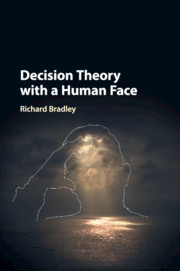Book contents
- Frontmatter
- Dedication
- Contents
- List of Figures
- List of Tables
- Preface
- Introduction
- PART I RATIONALITY, UNCERTAINTY AND CHOICE
- PART II PROSPECTIVE RATIONALITY
- PART III FACING THE WORLD
- PART IV RATIONALITY WITHIN BOUNDS
- 11 Imprecise Bayesianism
- 12 Changing Your Mind
- 13 Decision Making under Ambiguity
- 14 Confidence
- Appendix: Proofs
- Bibliography
- Index
14 - Confidence
from PART IV - RATIONALITY WITHIN BOUNDS
Published online by Cambridge University Press: 11 October 2017
- Frontmatter
- Dedication
- Contents
- List of Figures
- List of Tables
- Preface
- Introduction
- PART I RATIONALITY, UNCERTAINTY AND CHOICE
- PART II PROSPECTIVE RATIONALITY
- PART III FACING THE WORLD
- PART IV RATIONALITY WITHIN BOUNDS
- 11 Imprecise Bayesianism
- 12 Changing Your Mind
- 13 Decision Making under Ambiguity
- 14 Confidence
- Appendix: Proofs
- Bibliography
- Index
Summary
THE PARADOX OF IDEAL EVIDENCE
Two kinds of criticism have been lodged against the classical Bayesian view that agents should capture the empirical uncertainty they face by a single probability function on the set of factual prospects. So far we have concentrated on the objection that this is too demanding and that, for a variety of reasons, agents may be unable to determine precise probabilities for all prospects. We now turn to the second objection; that a probability assignment (whether precise or not) does not suffice to capture all relevant aspects of the agent's uncertainty.
Recall the example I presented in Chapter 11 to illustrate the difference between three grades of factual uncertainty, in which we have before us an urn containing black and white balls and you are asked to say how likely you think it is that a ball drawn at random will be white. In the ‘risk’ variant of the example, you are told that half the balls are black and half white; in the ‘ambiguity’ variant you are not told the proportions of black and white balls but you do know that they exhaust the colour possibilities, while in the ‘severe uncertainty’ variant you are told neither. Objective Bayesians are agreed that the answer of ‘one-half’ is the only reasonable one in the first situation, but disagree over the second and third, with Precisers continuing to advocate the answer of ‘one-half’ and Imprecisers counselling a wide probability interval; perhaps as wide as [0,1].
This example will serve equally well to bring out the second objection to the Bayesian view. Suppose now that you are in a situation of Grade 2 uncertainty, but are given the opportunity to sample the urn with replacement. Suppose that after 1,000 trials you have drawn 498 white balls and 502 black. How would the advice of the two kinds of objective Bayesian change as a result of the evidence? Not much at all, it would seem. For the Preciser, one-half remains the ascription that maximises entropy. Similarly, since the evidence rules out only extreme ball distributions, the set of probability functions consistent with it is the open interval (0,1). So the objective Impreciser's judgemental state should remain almost as imprecise as before.
- Type
- Chapter
- Information
- Decision Theory with a Human Face , pp. 289 - 304Publisher: Cambridge University PressPrint publication year: 2017

